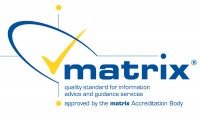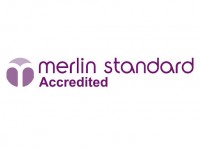What If ‘Job-Ready’ Was the Wrong Question All Along?

We’ve spent decades trying to make people ready for jobs. What if we designed jobs ready for people? The UK economy is leaking potential. Roles stay open, millions stay out of work and the truth? Our system was never built for the people most excluded by it.
But what happens when educators and employers flip the model and start building the bridge from both sides? This isn’t about blame, it’s about design and it starts with asking the harder questions we’ve avoided for too long.
The Employment Readiness Gap Is Real, But the Model Is Broken
We talk about a “readiness gap” like it’s a skills issue. Sometimes it is, but more often, it’s a visibility issue. If you’ve never built trust with someone who’s never had a stable mentor, how do you measure their potential?
If you’ve never adjusted a hiring process for someone with caring duties, how do you know if your pipeline is inclusive, or just uniform?
This isn’t about ‘fixing’ people. It’s about adapting systems that were only ever built for the average. And the average, frankly, never existed.
Inclusion starts by redesigning from the edges. Avoid assuming a CV gap equals a capability gap.
Why Employers and Educators Must Build Together
Education and employment were never meant to operate in silos. Yet somewhere along the way, we accepted that disconnect as normal. Colleges prepare, employers reject and those in most in need fall through the gap.
But there is another model, one where collaboration isn’t a press release, it’s a design table. Where curriculum and job specs are built together. Where expectations are shared, and so is responsibility.
That’s what The Social Recruitment Advocacy Group (SRAG) is driving: action, not abstraction.
Real partnership means changing the spec, not just meeting it. Avoid outsourcing inclusion to a tick-box.
Scaffolding Opportunity Isn’t Soft. It’s Strategic.
“We’re scaffolding opportunity for all.” Nick Hayward, Bedford College Group
In a world obsessed with speed and scale, scaffolding can seem slow. But what if it’s the only thing that actually works?
Scaffolding isn’t coddling. It’s engineering. It means sequencing support in a way that holds people as they rise and adapts as they grow. Confidence before interviews, wellbeing before work, skills before roles.
That isn’t charity, it’s strategy.
And when we start there, we don’t just change employment outcomes. We shift what opportunity even means.
Scaffolding builds capability. Pipelines often sort it out. Treat job placement as a first step, not a last one.
Proof: It’s Already Happening
These aren't pilot schemes. They’re working solutions, built solutions, built in real time by SRAG members across the UK.
- A care-experienced intern placed with a trauma-informed employer.
- A home-educated learner thriving in a digital co-design project.
- A returner balancing work and care through a tailored support role.
The common thread? These weren't ‘special measures’, they were thoughtful design.
We don't need a new theory of change; we need more places willing to act on the one we already know works.
Structure + empathy = scale.
Don't wait for perfect before starting anything.
Now the Question Is Yours
On 10th July, SRAG members and strategic partners will gather in Bedford College Group’s Sixth Form Grand Hall, not for a showcase, but for a working session.
The next SRAG Summit isn’t about what’s been achieved. It’s about what must come next.
So here’s the question:
If your job ads keep missing the people you claim to include, what are you willing to redesign?
We know the barriers, we’ve seen the models that work. The gap isn’t knowledge, It’s will. Join us. Build better answers. Let’s make employment work for everyone.
Contact us at [email protected]








